This article was produced and financed by NIBIO - Norwegian Institute of Bioeconomy Research - read more
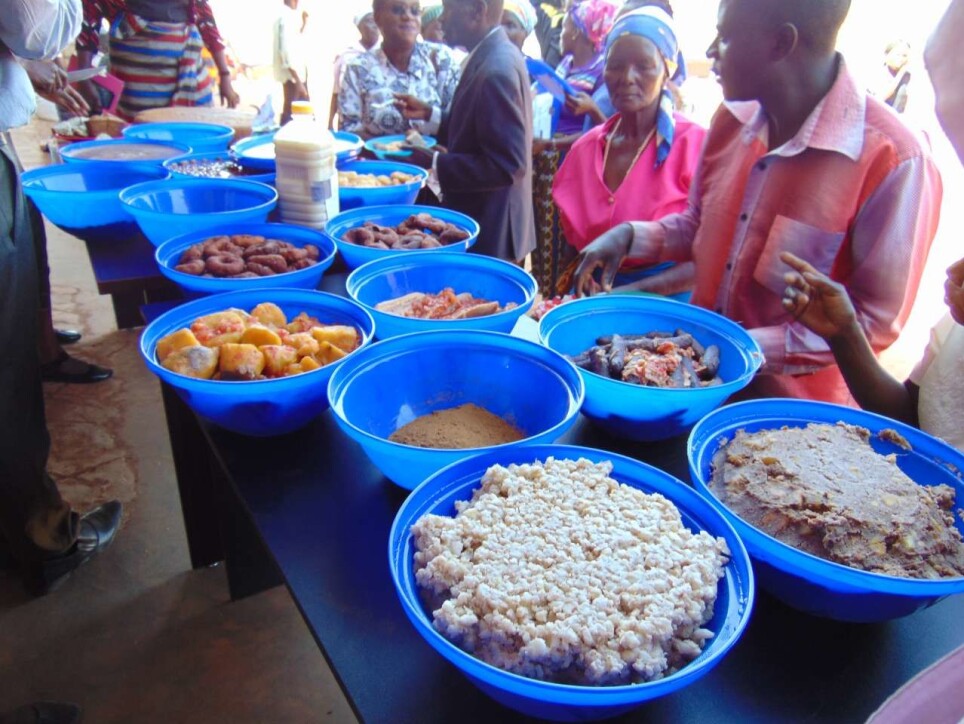
Interdisciplinary innovations boosting food security in Africa
InnovAfrica is an ambitious project, focusing on sustainable agriculture to improve food and nutritional security in Africa. As the project approaches its last year, the team takes a closer look at some of the specific methods, results and experiences so far.
For the last three years innovative sustainable agriculture technologies have been introduced in six Sub-Saharan African countries, in close collaboration with smallholders and value chain actors at the local level and stakeholders at the national and Pan African level.
“An interdisciplinary approach is a must for addressing complex issues such as food security,” says Project Coordinator Dr Sekhar Nagothu from NIBIO.
The InnovAfrica team organized an online mini symposium on the 4th of December at the 4th Global Food Security Conference, at which, several project partners shared successful project results. This article summarizes the main messages from the InnovAfrica mini-symposium.
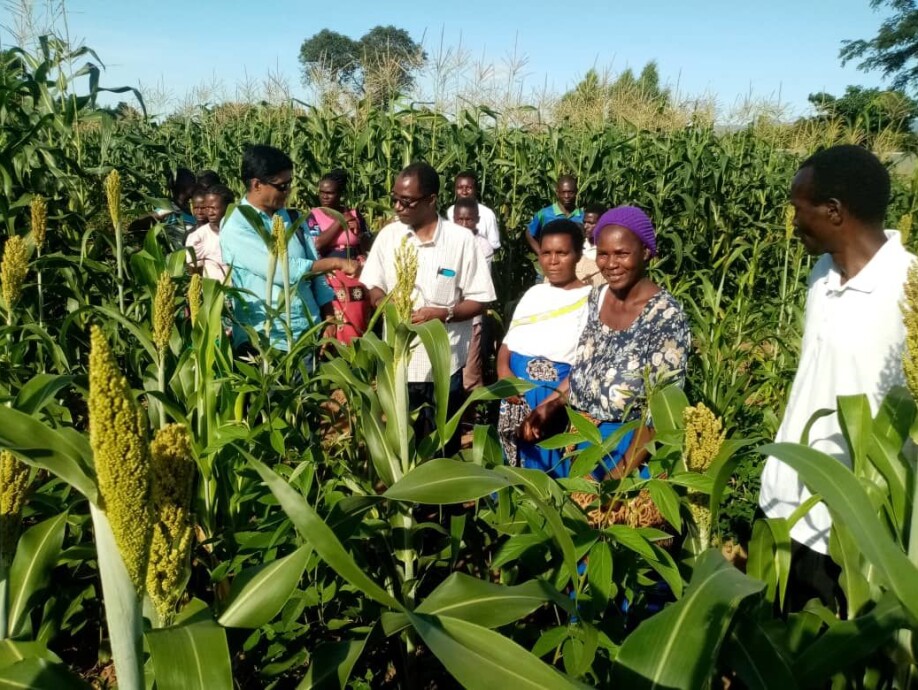
Increased crops with health benefits
In Malawi, the project has tested intercropping of different varieties of maize and legumes, such as beans and groundnuts. This innovation is being tested by the farmers themselves, and the benefits are evaluated by farmers. Results show that crop diversification has increased yields by 17-49 percent.
“I am very happy to take up the interventions from InnovAfrica on maize, sorghum, finger millets row-intercropping with legumes. I see benefits in terms of good plant growth, more biomass and improved soil fertility,” says Ms. Getrude Sibanda, pea farmer from northern Malawi.
“Thanks to InnovAfrica, this is the first time we are planting finger millet with legumes in raised ridges. We used to broadcast the finger millet and grow it as sole crop. Several farmers from my village and nearby, are now visiting my fields,” says another farmer, Mateyo Singini from Mzimba district in northern Malawi.
InnovAfrica also aims to introduce a healthier diet through crop diversification.
“Sorghum and millets are healthy food crops that contain high iron and calcium contents, and are gluten free. These crops should be expanded in Africa, where there is a lot of maize consumption,” says Dr Mehreteab Tesfai, Research Scientist at NIBIO.
This is evident from the feedback received in the project villages. A female farmer from a Malawi case study site said, “Consuming orange maize, sorghum and millets with legumes is the secret of my good health, even at the age of 75.”
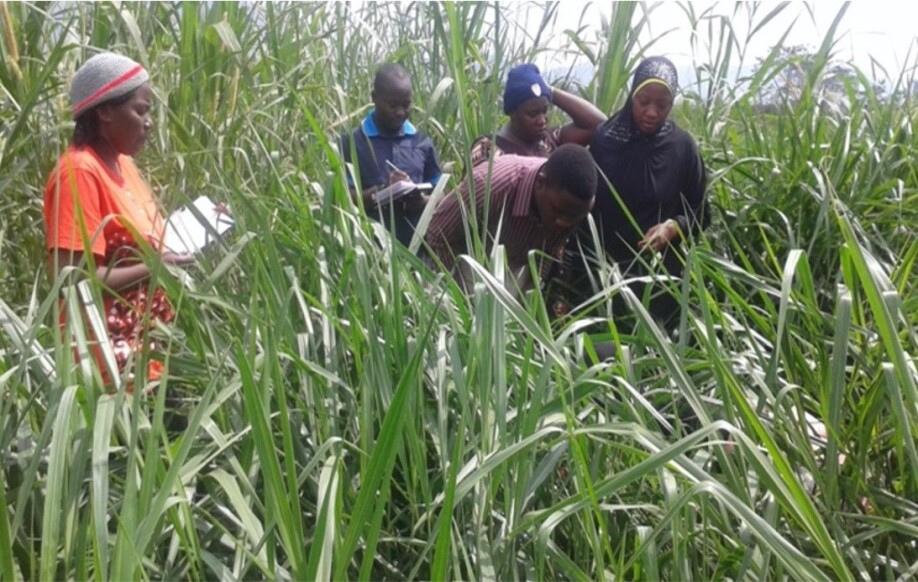
Drought resistant climate smart fodder grass with high protein content
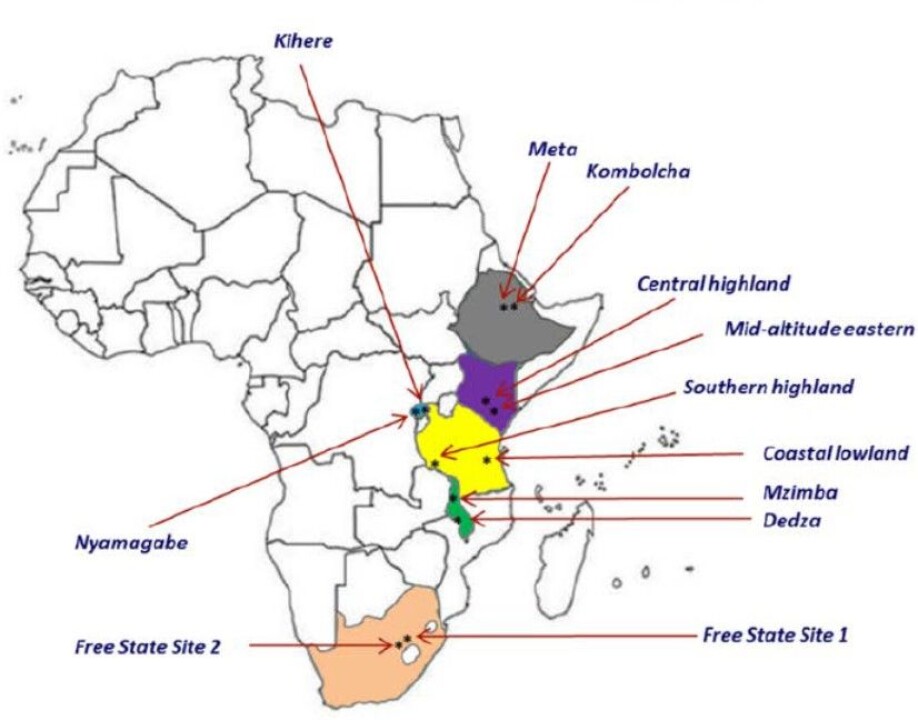
Another crop improvement is due to the introduction of different types of Brachiaira grasses, which is used as fodder for livestock. InnovAfrica promotes this grass because of the properties it has, including better drought resistance, more biomass production, and a high protein content than most other tropical grass species. These proteins make it a very useful grass for cattle farmers. Brachiaria grass has increased milk production by 15-40 percent in the project areas in Kenya. A total of 206 farmers from Kenya, Rwanda and Tanzania participated in the field trials, and yet another 20 323 farmers were reached through awareness campaigns.
Dr Sita Ghimire, Principal Scientist at BecA-ILRI Hub in Kenya, says that, so far, widescale adoption of Brachiaria grass has been limited by unavailability of seeds.
“Most of our reports are based on very limited access to seeds and use of vegetative planting materials. However, if we have enough seeds, it is very scalable.”
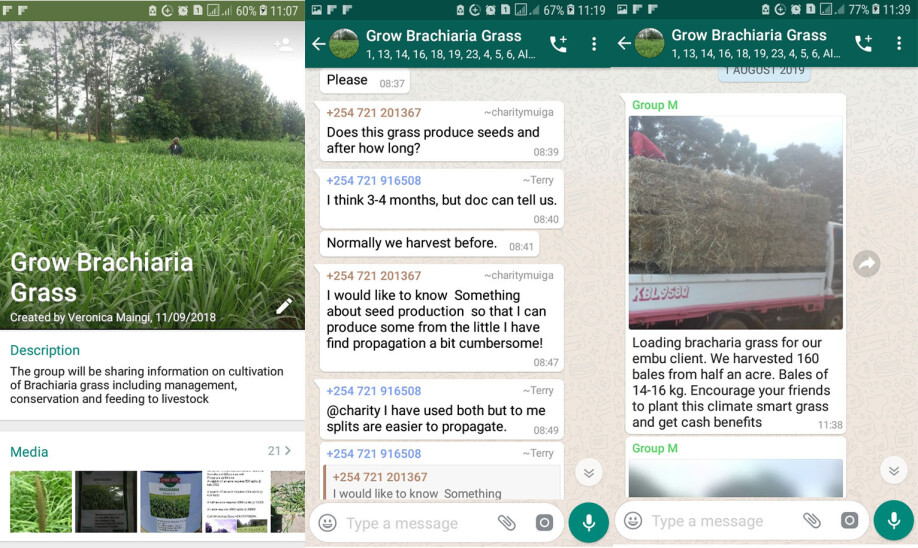
First village knowledge centre in Africa, based on Indian model
Africa’s first Village Knowledge Centre (VKC) was jointly established by Kenya Agricultural & Livestock Research Organization (KALRO) and the local community in Kangundo village (Kenya) in May 2018, with the support of NIBIO and MSSRF, India, through the InnovAfrica project. The Centre uses an innovative digital-based platform which links farmers through smart phones and social media as a conduit for faster and effective information and knowledge exchange to the rural communities. It is equipped with internet and communication technology (ICT) and digital tools, such as computers, web camera, microphones, voice recorder, phone and public address systems.
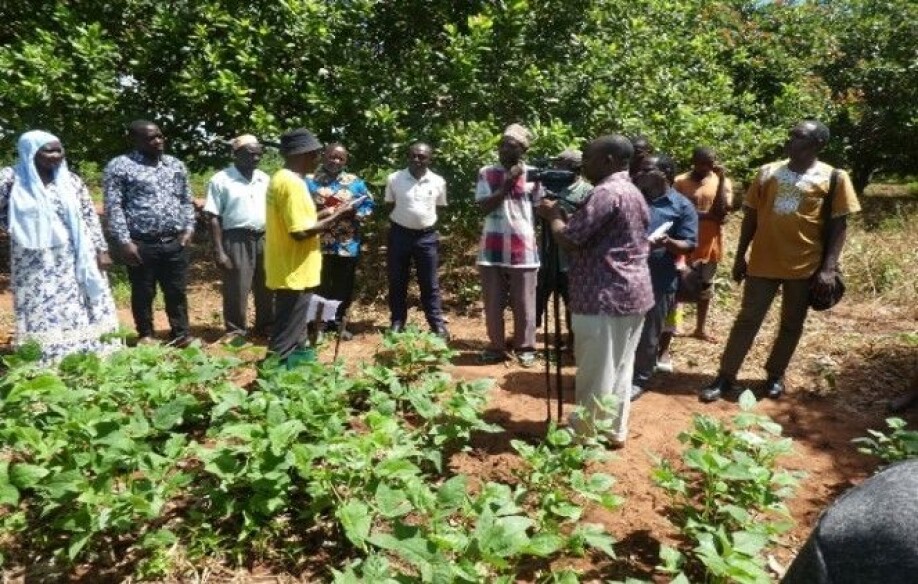
The VKC concept, including an ICT extension model, was first developed and implemented in India in 1980, and since then it has been further developed and used successfully to disseminate technologies to thousands of smallholding farmers across India. The objective of the VKCs is to revolutionise knowledge transmission in rural communities. In turn, this should pave way for enhanced knowledge and farmer connectivity, women included, as well as increased income, and reduced risks.
The VKC in Kenya maintains a database on Brachiaria grass-dairy value chain that is being tested and scaled up by the InnovAfrica project, as well as other crops and livestock technologies developed by KALRO. It provides precise and timely information on agriculture, and specifically Brachiaria grass-dairy value chains. Farmer networks are created to ensure connectivity and capacity building through WhatsApp and SMS.
By May 2020, more than 530 farmers requested and were supplied with Brachiaria seeds through the VKC. 500 of these made their seed requests through mobile phone SMS. WhatsApp groups shared 2550 messages and actively engaged in knowledge exchange on other crops as well. The Centre is also involved in capacity building through training and raising awareness in regard to new crops and livestock technologies and practices.
“We experience that young users use smart phones, whereas elderly people visit the centres,” says Dr Donald Njarui, the team leader of InnovAfrica project at KARLO, Kenya.
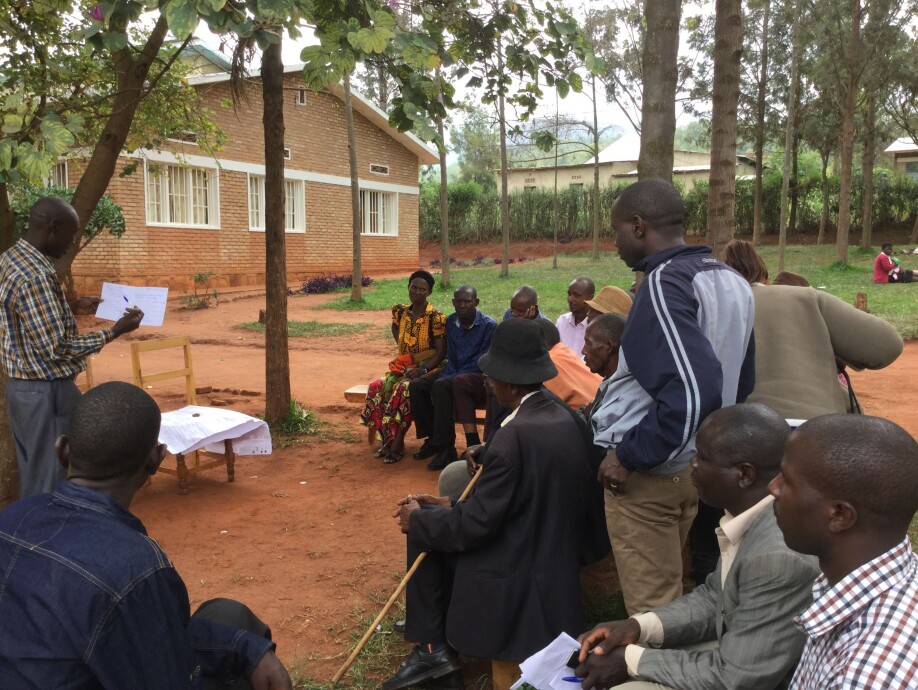
Integrated farm plans (or PIP)
One of the methods InnovAfrica is pilot testing is an Integrated Farm Plan (PIP). This is done through an approach where household members plan the way in which they would like their farms to develop infuture. To start with, farmers are challenged to make a drawing illustrating the current situation on their farm, as well as their desired future situation. These plans do not only involve crop production, but also livestock production, and other possible innovative measures to provide the household with an income.
“It differs from other methods because the farmers are really involved, but at the same time it takes time to change their mindset. In the end PIP generates proud farmers realizing that their land is their main asset and they feel able and motivated to invest in their farms,” says Dr Henk Wösten from Wageningen University and Research in the Netherlands.
Positively evaluated techniques from the InnovAfrica project are taken up and disseminated to farmers, who in turn may choose to integrate them as part of their PIP plan.
“PIP has led to change in crop and livestock diversity leading to increased yields, a more diverse diet, and increased income,” says Dr Wösten.
So far 344 farmers in Ethiopia, South Africa and Rwanda have participated in this pilot program.

Cross-sector stakeholder interaction
So-called multi-actor-platforms (MAPs), are the core element in the conceptual framework of the InnovAfrica project. It is a process of interactive cross-sector learning and collaboration between stakeholders that share interconnected problems and ambitions. The members are anyone involved along the value chain of the commodity in question, such as farmers, policy makers, researchers, processors, transporters, extension services, traders, financial institutions and any other person or organisation that is relevant. The MAPs in InnovAfrica consist of members representing the public sectors (39%), framer’s organizations (35%), Non-governmental Organisations (NGOs) (16%), as well as small and medium enterprises (SMEs) (10%).
“Stakeholder interaction through MAPs has strengthened science-stakeholder-policy linkage,” says project coordinator Dr Nagothu. He emphasizes that the policy link is important in order to bring results to the table and facilitate further implementation of innovations post-project.

The MAPs’ major role is to monitor progress of different innovations introduced by InnovAfrica project, and to collect feedback from stakeholders to accelerate up-scaling of successful InnovAfrica innovations.
“The involvement of MAPs in the project has strengthened the dissemination of the introduced technologies, increased access to market for famers and provided some assurance of sustainability of the introduced technologies,” says Professor Susan Nchimbi Msolla from Sokoine University of Agriculture in Tanzania.
She adds that for the MAPs to be effective, the MAP members must meet regularly, visit research sites and give feedback to researchers. This requires dedication in terms of time and resources.
With only one year to go, InnovAfrica’s project results so far are very promising. This was something EU’s external review committee also acknowledged in its recent mid-term evaluation. Among other things, the committee stated that the project has fully achieved its objectives and milestones for the reporting period.
This video captures some of InnovAfrica's partners' views on the consortium activities and impact so far, and their experiences with the project's framework.


































